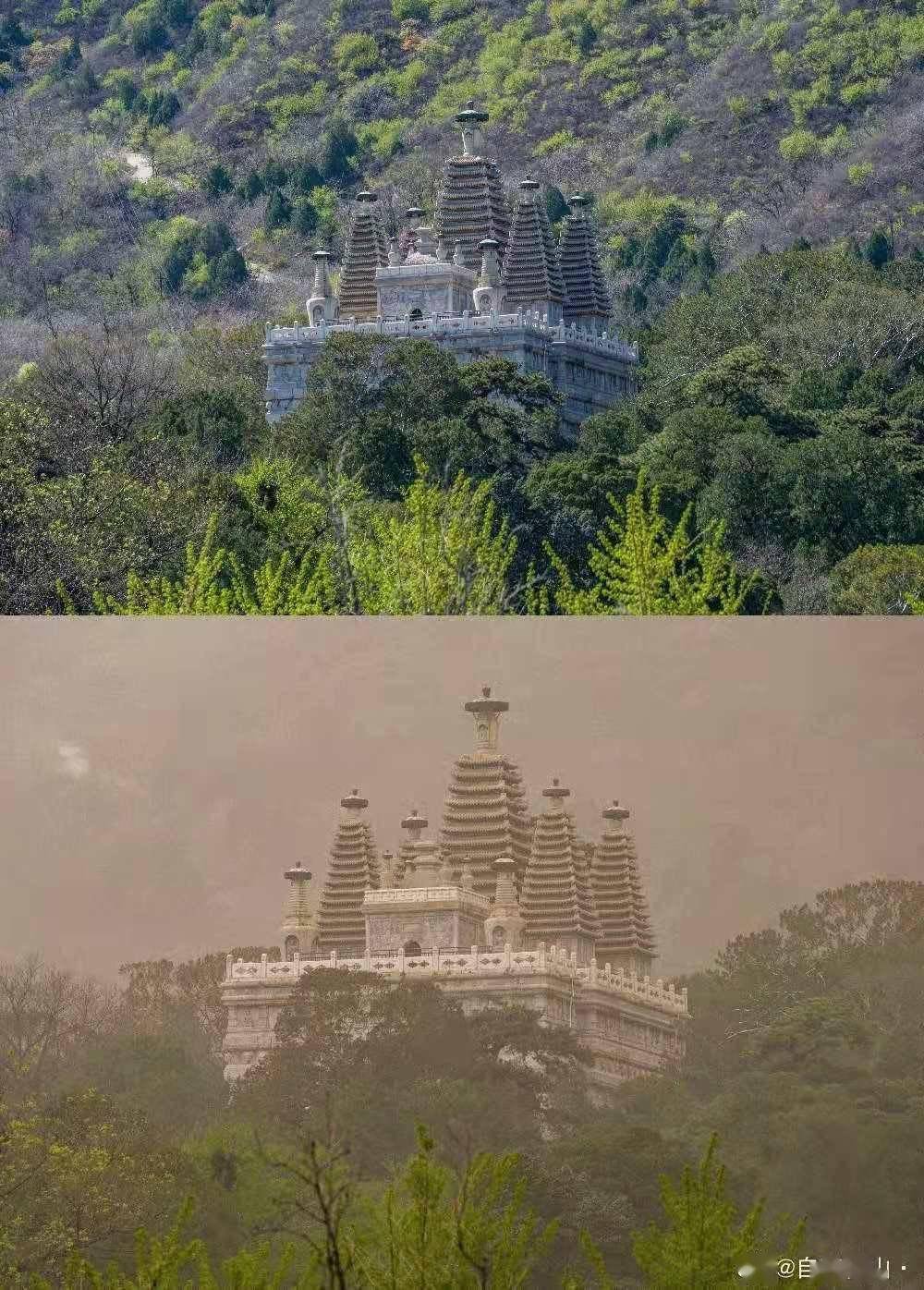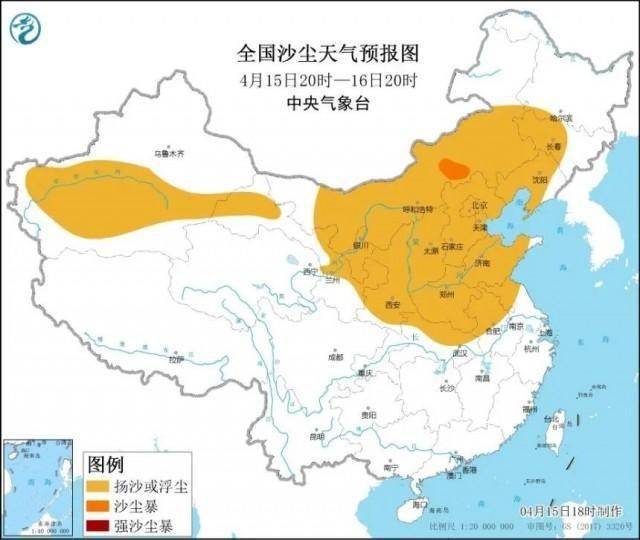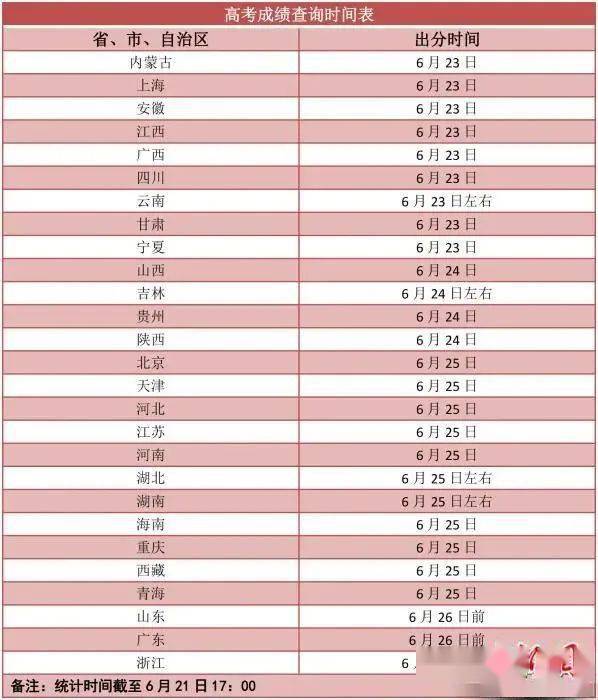One month later, northern China encountered another large-scale dusty weather.
Starting on the morning of April 15th, western Inner Mongolia, central and western Gansu, and central and northern Ningxia were hit by sand and dust. In the afternoon, sandy and dusty weather also appeared in the Beijing-Tianjin-Hebei area, and the sky was once dark as night.
The sand and dust of the last time are still vivid. In the afternoon, the sand and dust weather landed in Beijing again. In the afternoon, the weather in Beijing turned overcast. There was a sound of “spring thunder.” It can be described as “the water of the Yellow River is coming up from the sky”!

The Meteorological Department stated that at 8 o’clock in the morning on the 15th, the sand and dust had reached the border between China and Mongolia and the western part of the Hetao. There was sand and dust weather in the city from the afternoon to the first half of the night, and the minimum visibility was about 6 kilometers. According to the China Weather Network, the impact of Beijing’s dust will continue until the first half of the night. It is expected that after tomorrow (April 16-17), the northerly wind will “drive away” the sand and dust, and there will be no backflow of sand and dust in the next three days.

According to the Central Meteorological Observatory’s forecasts, affected by strong cold air winds, Beijing’s southern Xinjiang basin, Gansu, Ningxia, central and southeastern Inner Mongolia, central and western Liaoning, western Jilin, Shaanxi, Shanxi, Beijing will be affected by strong cold air winds. , Tianjin, Hebei, Henan, central and western Shandong, central and northern Anhui, northern Jiangsu, northern Hubei and other places will have sand or floating dust. Among them, there will be sandstorms in parts of central and western Inner Mongolia.
Many netizens are not calm, and show pictures one after another:
Sand dust + rainfall = mud, this is the first time I have encountered this kind of complex extreme weather.


“Dirty people” and “dirty cars” are constantly swiping screens on Weibo and Moments.


Some netizens jokingly said: The shameless face and the dusty face have never looked like this.

“This sand and dust weather has the characteristics of weak intensity, strong wind, fast moving speed, and large impact area.” Zhang Tao, chief forecaster of the Central Meteorological Observatory, introduced that the sand and dust weather was the same as the two dust weather in March. Both are Mongolia and the western part of Inner Mongolia. The background is also caused by the Mongolian cyclone and cold high-pressure weather system.

The Central Meteorological Observatory continued to issue blue dust storm warnings at 18:00 on April 15.Image source: Central Meteorological Observatory website
Compared with previous years, this year there seems to be a lot of dust and sand. According to statistics from the China Meteorological Administration, there are indeed more sand and dust weather this year, and there have been 7 occurrences so far.As for whether the dusty weather that the public is worried about will become the norm? Rao Xiaoqin, a senior engineer at the Environmental Meteorological Center of the China Meteorological Administration, clearly pointed out that it will not be possible. In the long run, under the background of global warming, the winter monsoon force and cold air activity will weaken, and the dynamic conditions for sand emission will also weaken. According to perennial statistics, the period from spring to March is the season with frequent occurrence of sand and dust, and the process of sand and dust accounts for about 80% of the whole year. It is expected that after late April, with the gradual increase in precipitation and temperature in northern areas, it is conducive to the growth of vegetation, and the underlying surface conditions for sanding will gradually improve, and the impact range and intensity of sand and dust will tend to weaken.

Image source: Weather in China
The picture comes from the Internet
Responsible editor : Li Xiaoxia





























































You must log in to post a comment.